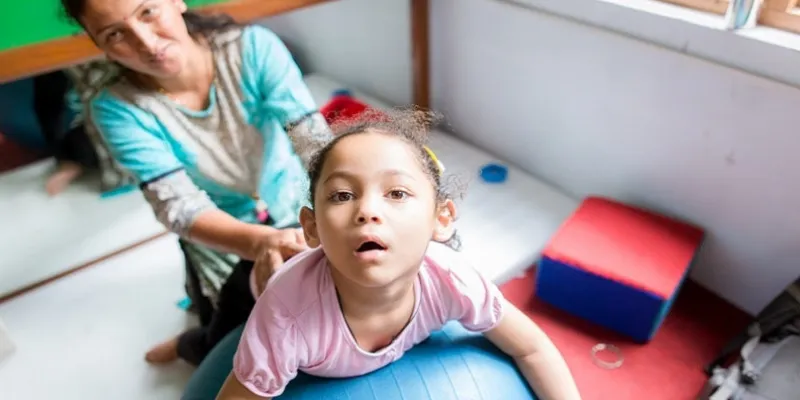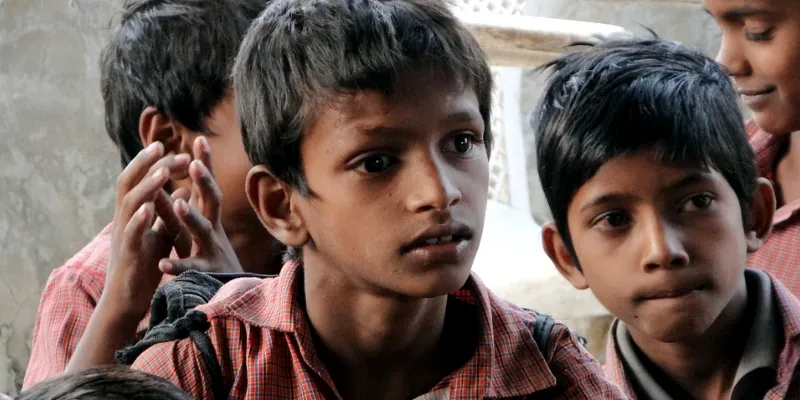How can the education sector cater to children with special needs
On World Autism Day, we look at how special training can help children with special needs thrive in schools.

A team of therapists work with children with special needs in a school in Himachal Pradesh. Image Credit: Handimachal Therapy Centre
Autism, a developmental disorder, impairs the ability to socially interact or communicate with others, and should not be confused as an intellectual disability. There seems to be a lack of awareness about this disability with people at large, so much so, that many haven't even heard of autism.
According to WHO, it is estimated that one in 160 children worldwide have Autism Spectrum Disorder (ASD). This figure is an average estimation and reported prevalence varies substantially across studies. Some well-controlled studies have, however, reported figures that are substantially higher. The prevalence of ASD in many low- and middle-income countries is so far unknown, whereas, in India, one out of 100 children is diagnosed with ASD.
Since the statistics are indicating an increasing trend, there is an urgent requirement for special educators in all schools.
The central government’s Sarva Siksha Abhiyan (SSA) has taken an important step in this direction and has enrolled more than 2,500 children with disabilities in over 40 schools under their inclusive education project. These students with disabilities are now being included in the same classroom with other students for increased acceptability by society at large.
The government has announced that every school in India should have at least 2 special educators. While this move is in the positive direction, multiple challenges yet to be tackled.
Also read: This app uses assistive games to provide autistic children with access to early education
Challenges

Children with special needs often experience a lack of support from teachers. Image Credit: Handimachal Therapy Centre
This study is based on my personal experience as a Special Educator for the past few years.
At individual level:
- Lack of communication or interaction with others viz. verbal interaction, eye contact, not understanding gestures, etc
- Fixation on their things or objects around them
- Aversion to changes; these children tend to follow a particular routine/pattern and need to be assisted before a change is made in their routine
- Repetitive behaviour. For example, constant flapping of hands, rocking chair, etc
- Significantly sensitive to sound, light, and even touch.
At school level:
- Children without difficulties are often seen bullying, misbehaving with these children and sensitisation of children without special needs with Children With Special Needs (CWSN) is a must
- CWSN often experience a lack of support from teachers other than special educators with a lack of resources in the institution acting as the cherry on top
- They require immediate attention during free periods as the children in the classroom are bound to make noise and children with special needs may exhibit signs of distress due to sensitivity to noise
- Untrained teachers need to give extra time to CWSN enabling them to respond positively in a classroom setting. By doing this, we are supporting the child with special needs by enhancing their self-confidence.
Also read: A team of therapists is changing lives of children with special needs in the Himalayas
A solution approach to daily challenges

A child-centric approach needs to be undertaken where the team of special educators, therapists, counsellors, and class teachers, discuss case-specific approaches to enhance the needs and growth of CWSN.
The following traits and problems might seem common with children who require special attention, yet they are often ignored.
For instance, an autistic child sometimes faces a major challenge related to his classroom settings. They are unable to sit in the classroom for too long, especially during recess since the children without difficulties make a lot of noise. In order to face this challenge, they are seen covering their ears to drown the noise. Such children require immediate special attention from the trained teacher.
Another case, commonly witnessed, is a child flapping their hands or sometimes making noise in the classroom as their sensory needs are not getting fulfilled. They want to express themselves but are unable to do so. The repercussions of this can often lead to isolation.
These are very important and need to be immediately dealt with, or may lead to other issues when left unattended.
The following are my most important first line propositions:
- Follow the child-centric approach, where the team of special educators, therapists, counsellors, class teacher, and head of the department should sit together and have a panel discussion in order to reach to case-specific constructive decision and work towards the enhancement and growth of the CWSN.
- Counsel the parents of CWSNs, to be sensitive to their needs at home. Parents to take forward the case-specific approach decided at school for better and faster results.
- Sensitisation programs to be held at school not only for non-CWSN students but also for the non-trained staff and hire as many special educators as possible in order to provide better facility to CWSNs.
According to my understanding, not more than two CWSNs to be allocated per Special Educator for desired results.
Also read: How the mother of an autistic child is helping 15 autistic children become self-sufficient






